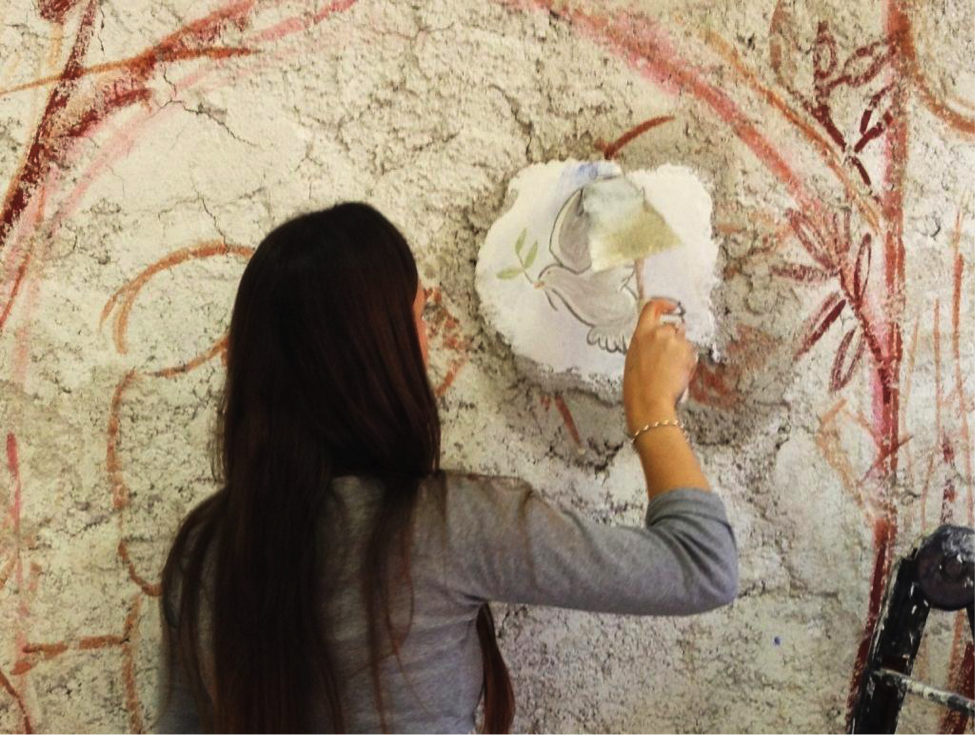

John Cabot University students are immersed in one of the most vibrant and historic art scenes the world has to offer. Not only do they have access to Rome’s legendary art collections, they can try out both traditional and modern forms with their own hands at JCU’s fine art studio.
In addition to classes in film and digital photography, graphic design, figure drawing, and painting, JCU offers instruction in the fine art of fresco. Under the expert guidance of Professor William Pettit, students learn to make beautiful murals from simple ash and plaster, just as masters like Michelangelo did during the Italian Renaissance.
Study Abroad Students Ask: How Did Michelangelo Do It?
Fresco as a process has been known to artists since antiquity; however, ‘buon fresco’ or ‘true fresco’ was perfected during the Renaissance by Michelangelo and his contemporaries - becoming the most popular style of mural painting from the late thirteenth to the mid-sixteenth centuries.

‘Fresco’ is the Italian word for ‘fresh.’ It’s the art of painting hand-ground natural earth pigments onto a freshly made, wet plaster surface. “When it’s done well, it lasts thousands of years,” says Paul Schwartzbaum, fresco conservator at the Guggenheim Museum.
Frescos are painted on plaster made from lime, water, and brown volcanic ash Italians call “pozzolana.” Three distinct layers of plaster are required before painting can begin:
- Arriccio: a thick preliminary layer with a rough, scratched surface for adhesive purposes.
- Marrone: a brown middle layer made of soil and crushed stone along with lime and pozzolana.
- Intonaco: a delicate, fine white layer, which forms the actual painting surface (it’s “very thin, like a sheet of paper,” says Schwartzbaum.)
The amazing durability of fresco has helped preserve Michelangelo’s masterpieces for students in Rome to visit and study.
The Chemistry of Fresco Colors
Study abroad students who have visited the spectacular Sistine Chapel will be surprised to learn that Michelangelo used only seven distinct pigments for the entire composition. Each pigment was derived from minerals found in earth and clay - ochre for reds, lapis lazuli for blues, and so forth – and mixed with water to form a diverse color palette.
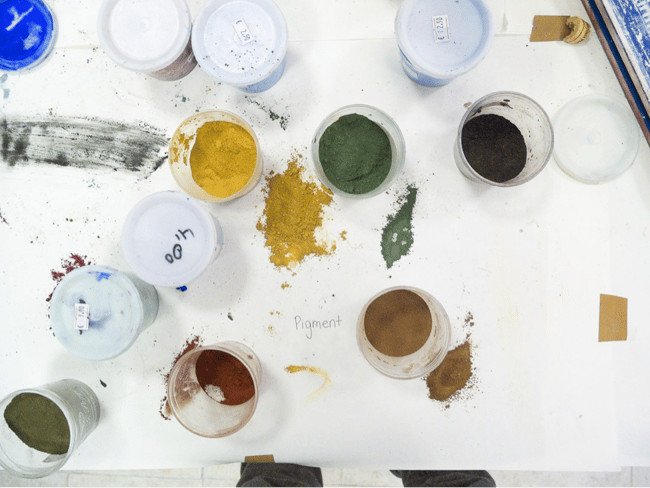
When first applied to plaster, the colors appear translucent, like watercolor. But as the painted fresco dries, calcium hydroxide in the plaster combines with carbon dioxide in the air to form hardened, rock-like calcium carbonite.
The chemical reaction helps to illuminate and intensify the colors, cementing the color particles and the plaster together, making the dried painting a permanent part of the wall.
Perfecting the ‘Buon Fresco’ with Art Classes in Italy
Would you like to try Michelangelo’s famous technique for yourself? If you take art classes in Italy at JCU, you will explore the history, theory and hands-on applications of fresco - in the city that houses some of Michelangelo’s most revered masterpieces.
Professor William Pettit teaches JCU’s Fresco Painting course, which involves daytrips and visits to important examples of historic frescoes in Rome, all within walking distance of the university art studio.
“Each student takes a small section of the studio wall and prepares a fresh plaster ground on which to execute a part of a coordinated decorative scheme," says Professor Pettit.
Here are some photos of his students at work:
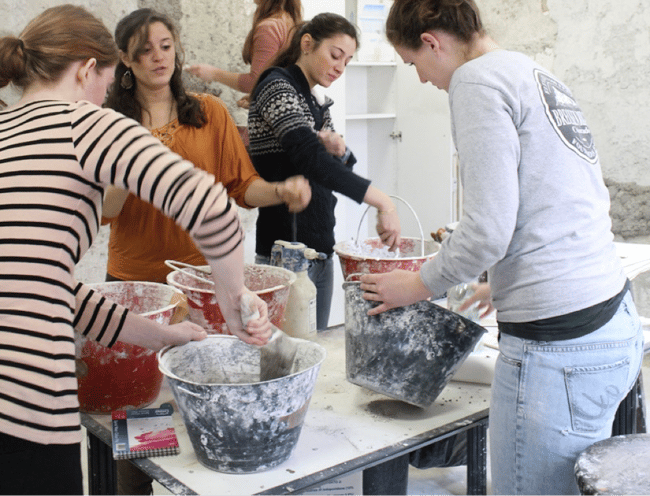
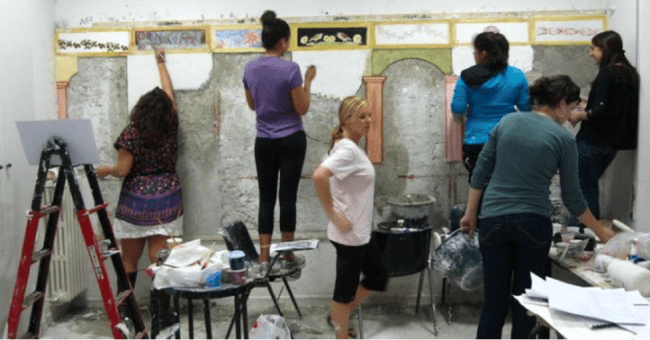
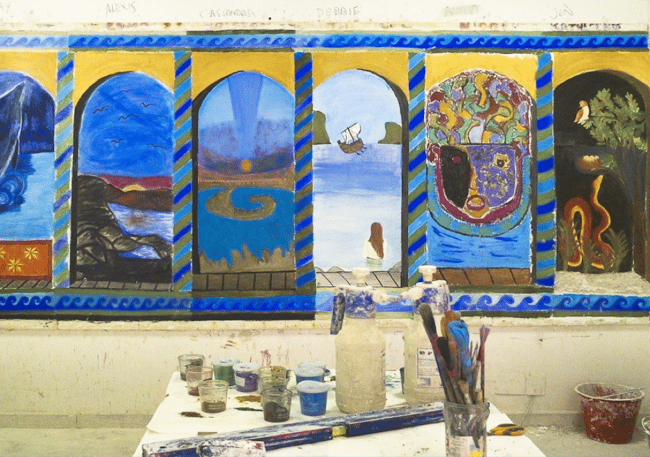
Not sure if fresco is your thing? Consider enrolling in one of JCU’s many other studio art classes and explore your creative side while studying abroad in Rome - one of the most artistic places on earth!
As JCU art professor Peter Flaccus puts it: “By the end of a course, nearly everyone has made something that they would not have been able to imagine when they first started."
Planning to study abroad in Italy? Visit JCU for information about degree programs, student life, admissions, and more!




